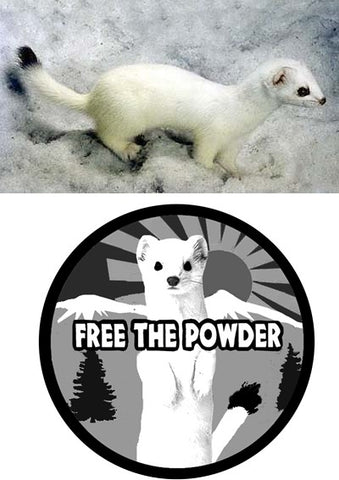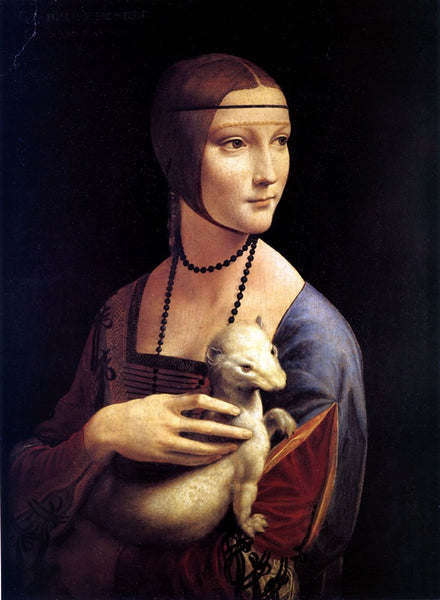The Story of Thurman the Ermine
 The Ermine (Mustela Erminea) is also known as the stoat or short-tailed weasel. It is found across Canada, the northern parts of the US, Europe and Asia. The Ermine lives in the Boreal forests (coniferous, evergreen) of the mountainous regions, as well as the northern tundra. It inhabits open spaces, rocky areas and marshes, surrounded by the forest. The Ermine is highly adapted to living in harsh, cold environments. They make their dens in the roots of trees and rocky crevices. The average ermine is about 1 foot long with a 5-inch tail, and weighs between 3-15 ounces. During the spring and summer the Ermine's coat turns brown with a white underbelly and a black tip on its' tail. In the winter the coat turns all white, with the exception of its signature black-tipped tail. The Ermine is a very aggressive carnivore. It eats rabbits, insects, birds and rodents of all kinds. Because of their large, razor sharp teeth, they have the ability to catch and kill animals significantly larger than themselves. But the Ermine does have to be cunning to avoid becoming prey to its many nemeses: owls, falcons, hawks, lynx, fox, wolves, and bobcats. During the Middle Ages the white fur of the Ermine was popular in clothing, but rarely anymore. The most famous Ermine in history is immortalized in Leonardo da Vinci’s masterpiece painting "Lady with an Ermine". Ermines are abundant in nature, and are neither threatened nor endangered. Why is he on the Free the Powder logo?
The Ermine (Mustela Erminea) is also known as the stoat or short-tailed weasel. It is found across Canada, the northern parts of the US, Europe and Asia. The Ermine lives in the Boreal forests (coniferous, evergreen) of the mountainous regions, as well as the northern tundra. It inhabits open spaces, rocky areas and marshes, surrounded by the forest. The Ermine is highly adapted to living in harsh, cold environments. They make their dens in the roots of trees and rocky crevices. The average ermine is about 1 foot long with a 5-inch tail, and weighs between 3-15 ounces. During the spring and summer the Ermine's coat turns brown with a white underbelly and a black tip on its' tail. In the winter the coat turns all white, with the exception of its signature black-tipped tail. The Ermine is a very aggressive carnivore. It eats rabbits, insects, birds and rodents of all kinds. Because of their large, razor sharp teeth, they have the ability to catch and kill animals significantly larger than themselves. But the Ermine does have to be cunning to avoid becoming prey to its many nemeses: owls, falcons, hawks, lynx, fox, wolves, and bobcats. During the Middle Ages the white fur of the Ermine was popular in clothing, but rarely anymore. The most famous Ermine in history is immortalized in Leonardo da Vinci’s masterpiece painting "Lady with an Ermine". Ermines are abundant in nature, and are neither threatened nor endangered. Why is he on the Free the Powder logo?


